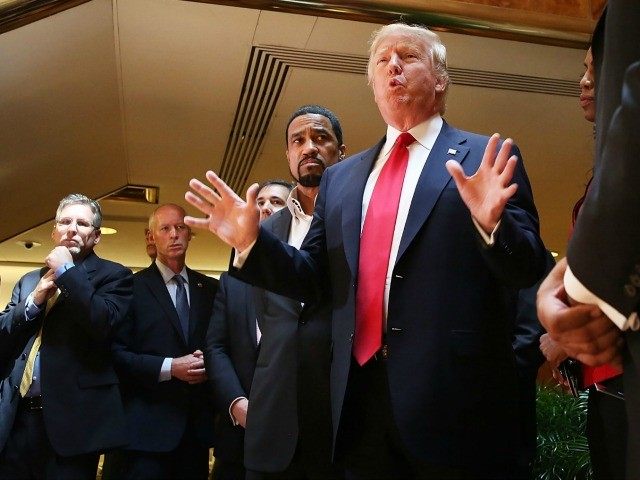A confident Donald Trump will make just one more appearance before New York’s GOP presidential primary. He’ll be in Buffalo, New York Monday evening.
The Real Clear Politics average of polls gives him a 53 percent to 23 percent lead in the Empire State over his nearest rival, Gov. John Kasich.
Trump is expecting a resounding win in his home state to help him reclaim the momentum he had before his double-digit loss to Sen. Ted Cruz in the Wisconsin primary two weeks ago.
Though neither Kasich nor Cruz won their home states with more than 50 percent of the vote, (Kasich had 47 percent in Ohio and Cruz had 44 percent in Texas), the New York State Republican Party delegate selection rules have given Trump a much higher margin to hit if he intends to walk away with the kind of resounding victory he needs.
In order to obtain all 14 of the statewide delegates available (out of a total of 95 up for grabs Tuesday), Trump must win at least 50 percent of the vote statewide. Should he fall below 50 percent statewide, he would receive a proportion of the 14 statewide delegates, shared with any of his rivals who exceed the 20 percent statewide threshold.
In the event Trump clears the 50 percent statewide hurdle, however, he has 27 additional hurdles in his way. Three delegates will be allocated in each of the state’s 27 Congressional Districts (for a total of 81) on the same 50 percent majority winner take-all basis. In any district in which Trump wins less than 50 percent, he would receive only two, rather than three, delegates if he wins with a plurality. The second place finisher would receive one delegate (provided he clears the 20 percent threshold).
Should Trump fall below 50 percent in as few as a dozen of the state’s 27 Congressional Districts, Trump would pick up 83 of the state’s 95 delegates. Trump’s campaign has suggested it would pick up 90 delegates.
In the first four days after Wisconsin, he made only one appearance, on Long Island. Since then, he picked up the pace, even adding two stops over the weekend at Plattsburgh and Watertown in the state’s northernmost 21st Congressional District.
Trump’s decision not to make a campaign stop during the two weeks after the Wisconsin loss in the 23rd Congressional District (a string of rural counties and small cities known as “the Southern Tier” extending from Jamestown in the southwestern corner of the state to Elmira in the south central part of the state) represents a gap in an otherwise aggressive plan of statewide appearances. He also has not appeared in Binghamton, the largest city in the adjacent 22nd Congressional District, where Sen. Ted Cruz stopped on Friday.
Trump’s schedule was open prior to his 7 pm rally in Buffalo Monday night.
Binghamton and the small cities of the 23rd Congressional District are on the way to Buffalo from New York City.
The Trump campaign appears confident that their candidate does not need to make an appearance in every Congressional District in the state in order to secure the resounding victory he needs to regain the “winner” momentum that propelled him to front runner status.

COMMENTS
Please let us know if you're having issues with commenting.